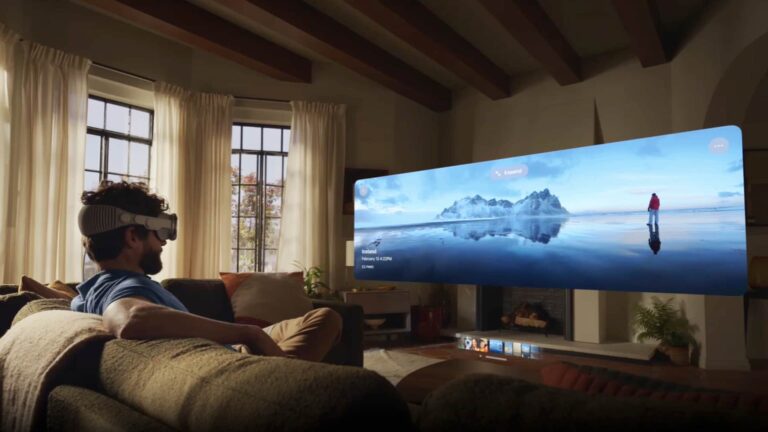
One of the key lessons that the AR (and VR) industry learned after its circa-2017 hype cycle is that it’s generally not a good idea to set overblown expectations. Many companies and investors got burned from believing that AR’s revolutionary impact was imminent.
Consumers have also been turned off to some degree. That’s not because AR isn’t compelling, but because it’s been somewhat disappointing — at least relative to its hyped promises. Magic Leap 1 was one example of this sequence playing out, and the company paid for it.
Since then, Magic Leap 2 redeemed many sins of the father, and the industry has seen other milestones, such as Vision Pro’s launch. Though the latter’s price tag precludes any meaningful scale, it’s Apple’s demonstration of what’s possible at any cost – a glimpse of AR’s future.
Meanwhile, AR is achieving other small wins. While the technology works towards its headworn endpoints, mobile AR – though not the optimal form factor – is gaining scale, traction, and revenue today. It’s a stepping stone towards a headworn AR future, but also an end in itself.
Realistic Timeline
With that backdrop, what’s the timeline for ubiquity in AR’s fully-actualized form? By that, we mean all-day AR glasses with stylistic viability and wearability. That reality isn’t present today because current technology can’t achieve both graphical intensity and wearability.
As AR leaders have learned these lessons firsthand, we’ve begun to notice a common theme in their public statements. They’ve realized that the smart play is to be honest with themselves and consumers about the realistic timeline for AR glasses’ lifecycle.
The two biggest examples in recent history are Mark Zuckerberg and Evan Speigel. Both lead companies that are at different stages of AR glasses R&D and market penetration. And both have recently explicated a similar timeline of about ten years for AR glasses’ actualization.
Mark Zuckerberg on the Information’s Podcast.
When we got phones, we didn’t get rid of our computers. We maybe just shifted some of our time towards phones. My guess is that we’ll have phones for a while too, so that part of what we do will always be important. But I think over time, [AR] will become the platform for more and more people, and I think that there’s a lot of awesome stuff that comes from that. If you can deliver a computing platform that’s fundamentally more human and about creating natural interactions between people, that’s sort of the dream that we’ve been chasing for a long time. If we can build that — and I do think it will be in a decade — a lot of the things we’ve talked about today should be delivered and at scale. I think that that will be very exciting. A lot of this stuff will start to come about in the 2020s. It may not really reach the full scale until 2030.
Evan Speigel at TechCrunch Disrupt
Spectacles represent a long-term investment in augmented reality hardware. […] So I think it’ll be roughly ten years before there’s a consumer product with a display that could be really widely adopted. But in the meantime, we’ve built a relationship with our community and all these people who love building [AR] experiences and we’re sort of working our way towards that future, rather than go in a hole or in an R&D center, and try to make something that people like, then show them ten years later. We’ve sort of created a relationship with our community where we build that future together.
Managing Expectations
To circle back to an earlier point, though the road to AR glasses is long and winding, there are small wins along the way. The above two tech leaders helm companies that are achieving milestones in VR and mobile AR, including usage and revenue targets.
These short-term wins are a key enabler for their ability to speak honestly about the long term. They can temper expectations for AR glasses while armed with the confidence that the spatial computing work they’re doing today is producing tangible, albeit gradual, results.
In fact, despite the market trough (or a pendulum swing as we’ve put it), AR is far from dead. It’s just taking longer than first expected to develop in terms of underlying capabilities and cultural acclimation. Hype aside, AR is moving at the pace it was always meant to.
This framing makes AR’s 2030 deferment easier to swallow. And the sooner we all come to terms with that – including generalist tech punditry that still characterizes AR glasses’ world-changing impendence – the more we’ll set up AR to succeed through realistic expectations.

